RARE! WWII 1943 Huon Peninsula New Guinea Campaign 8th Photo Reconnaissance Squadron (5th Air Force) Heavily Used Sio Mission Aerial Photo Map*
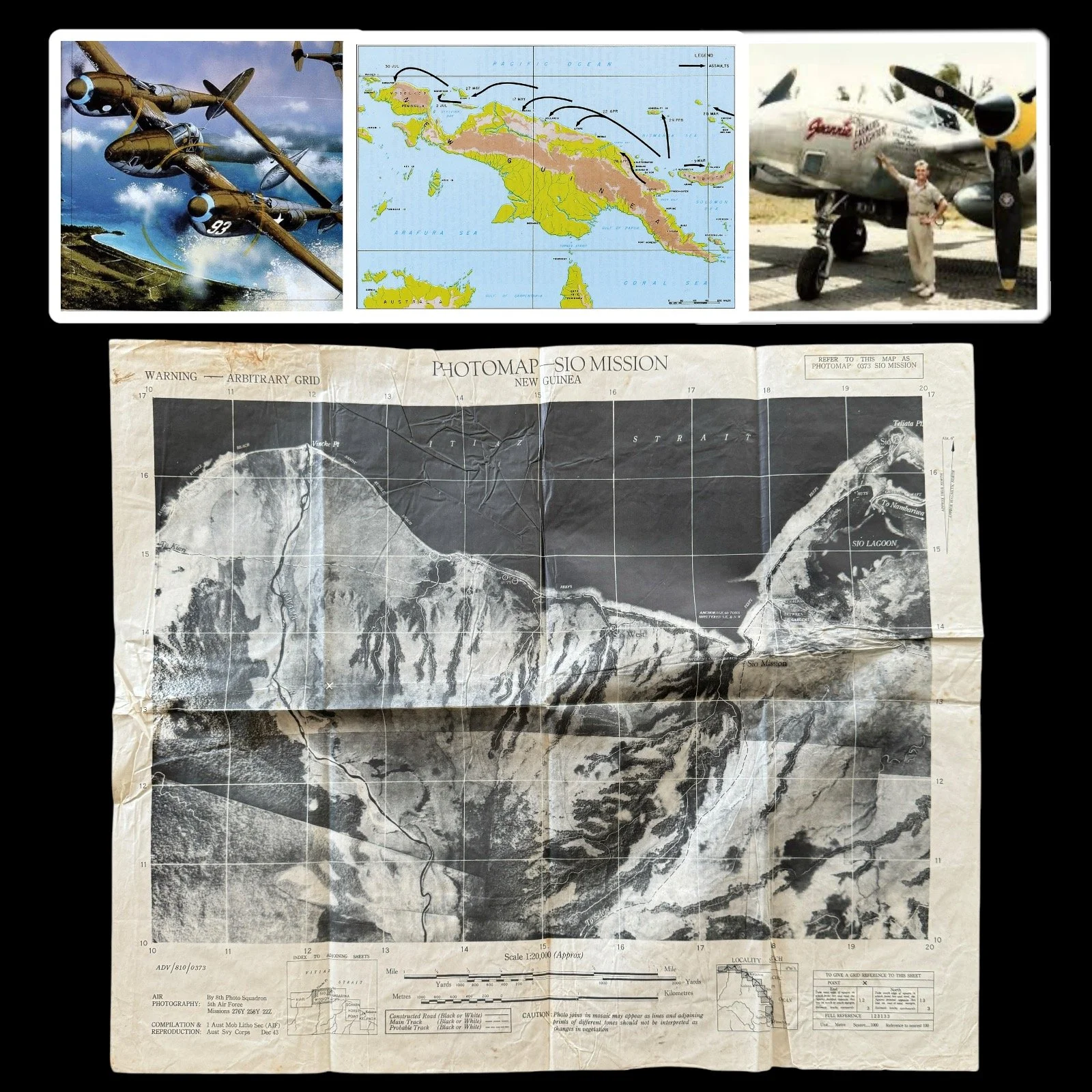
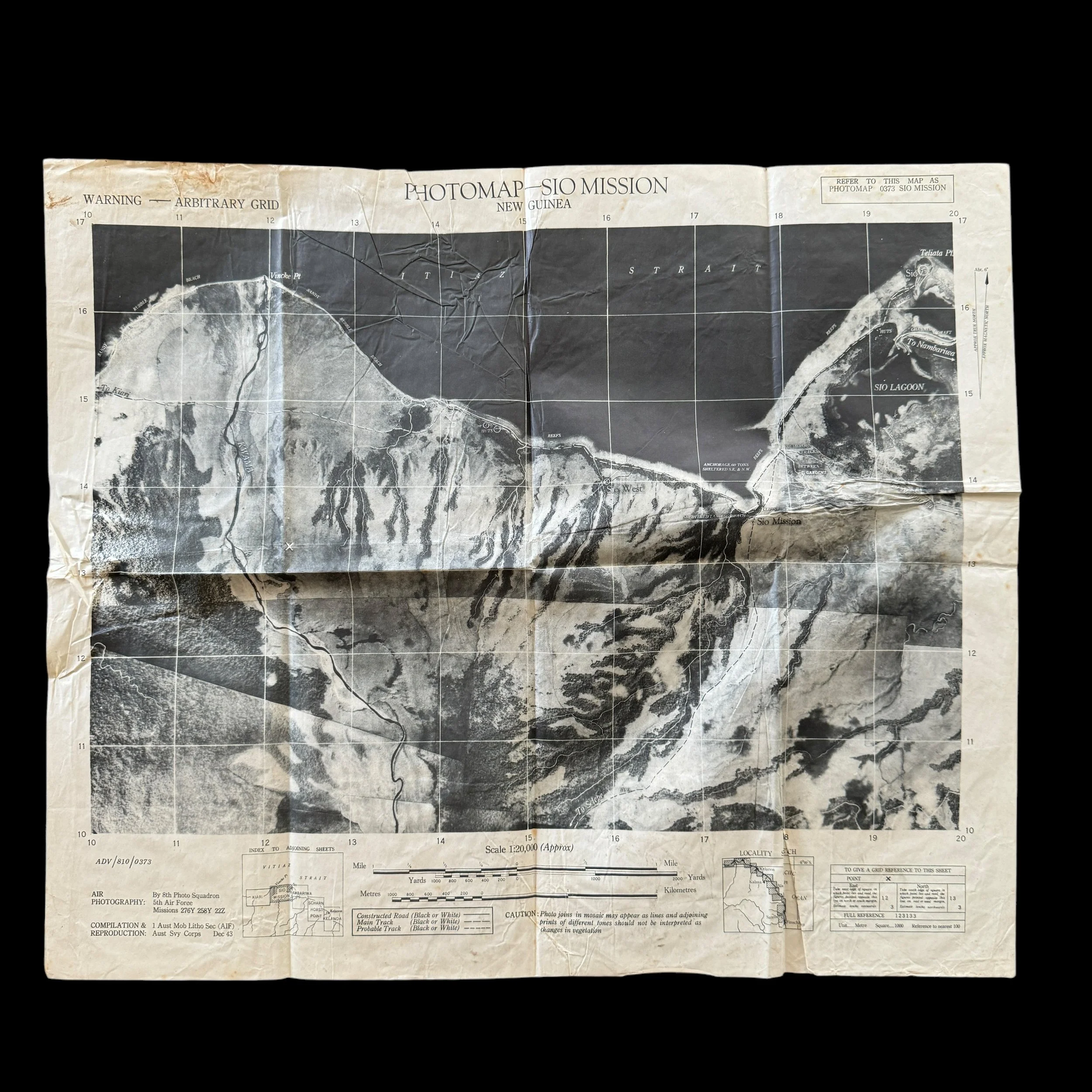
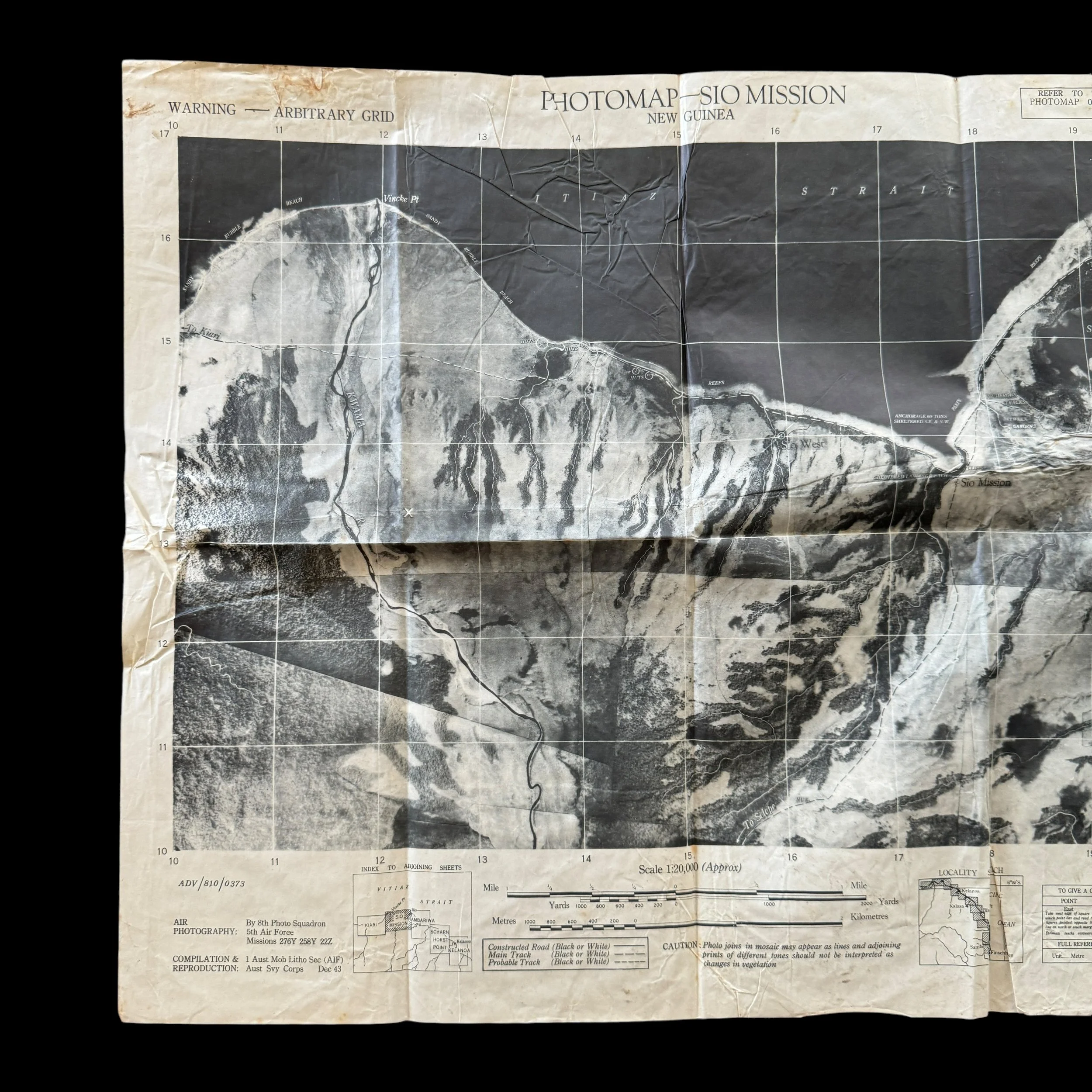


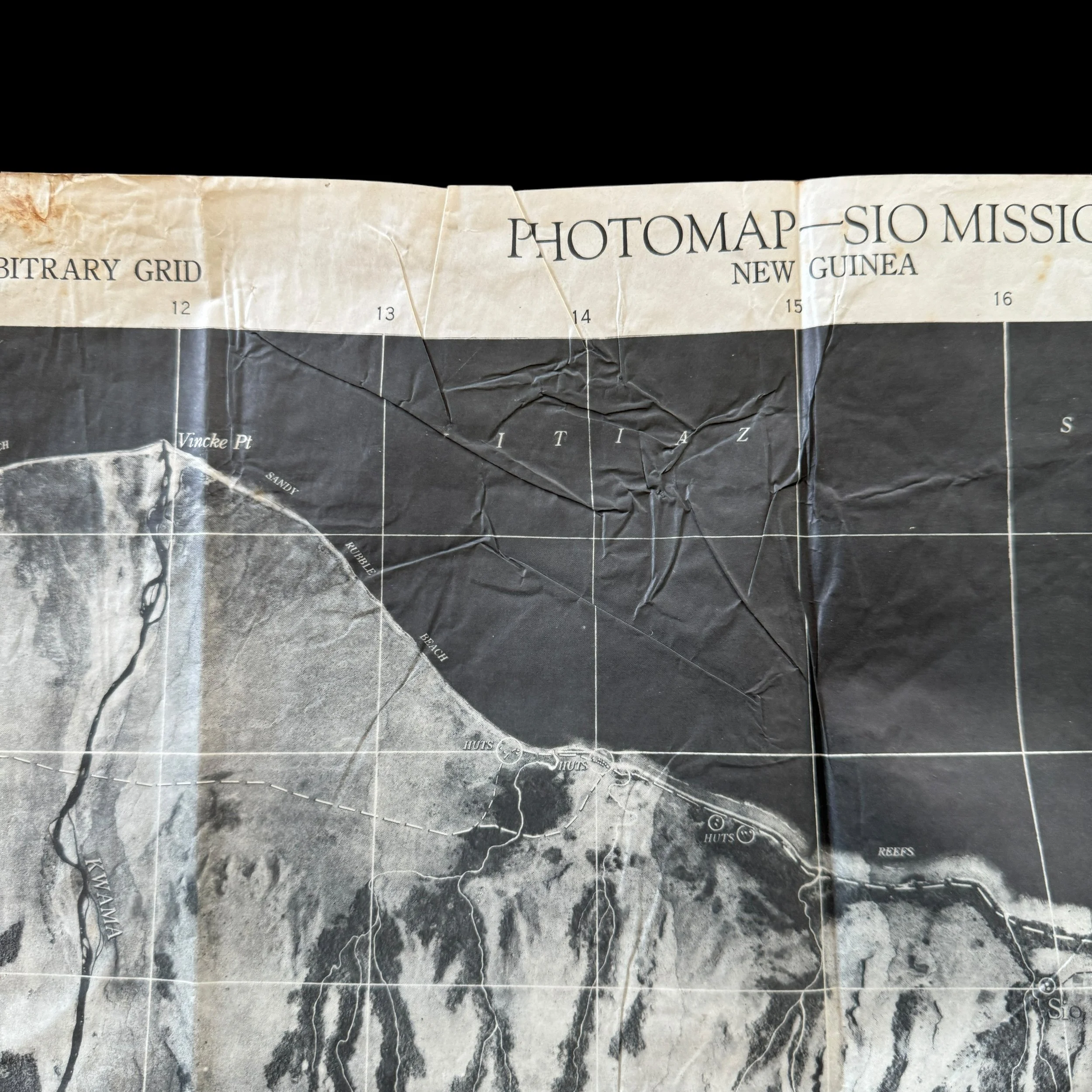
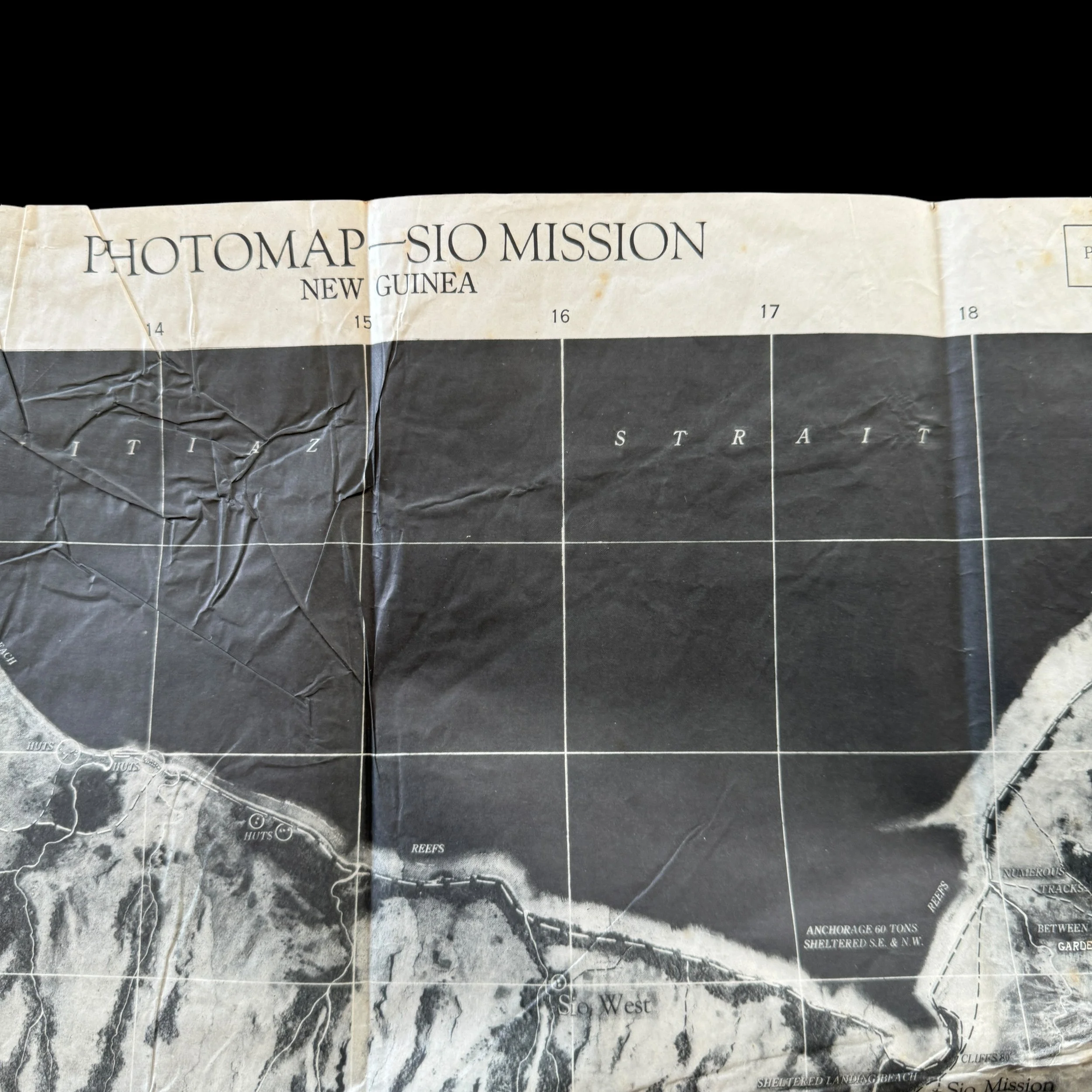
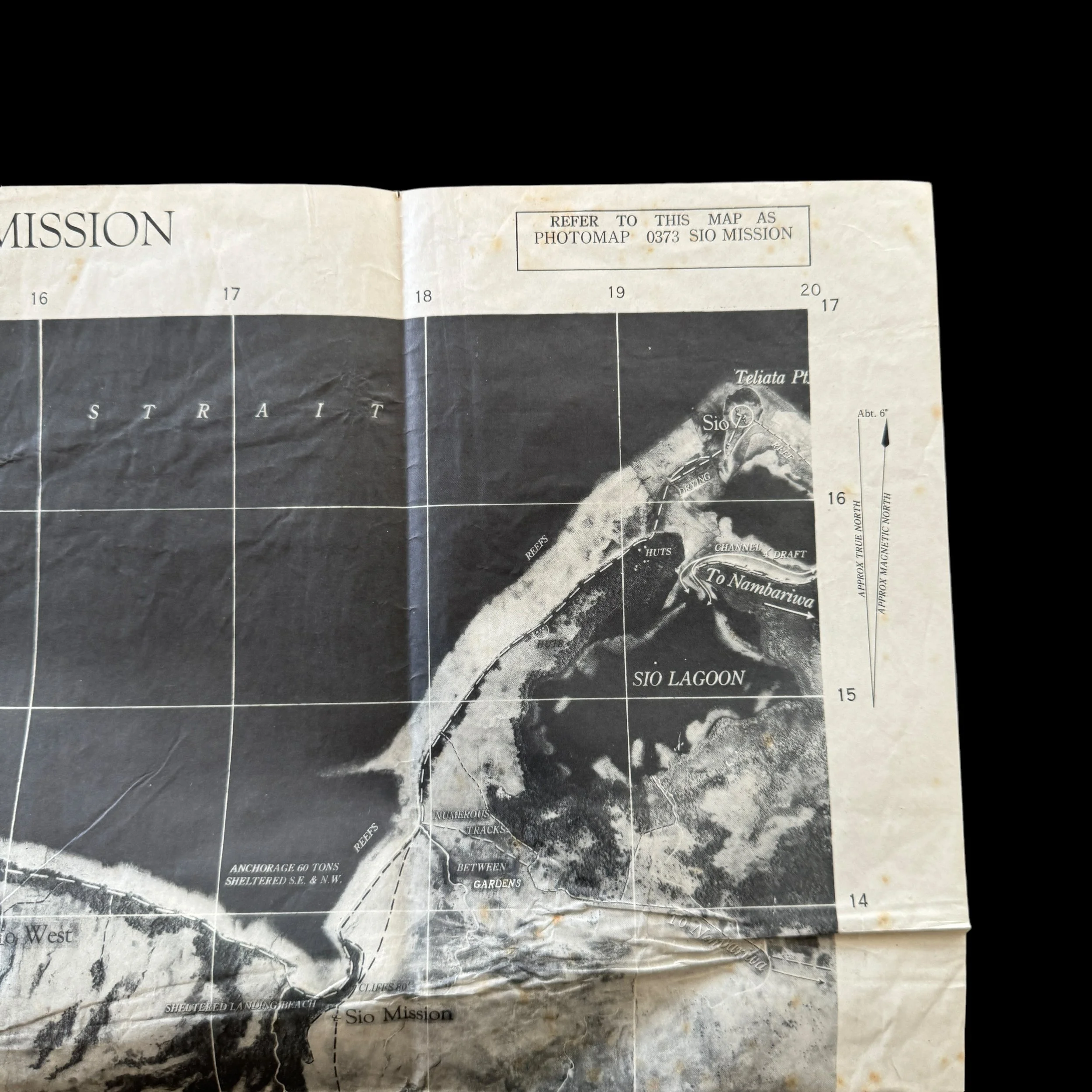
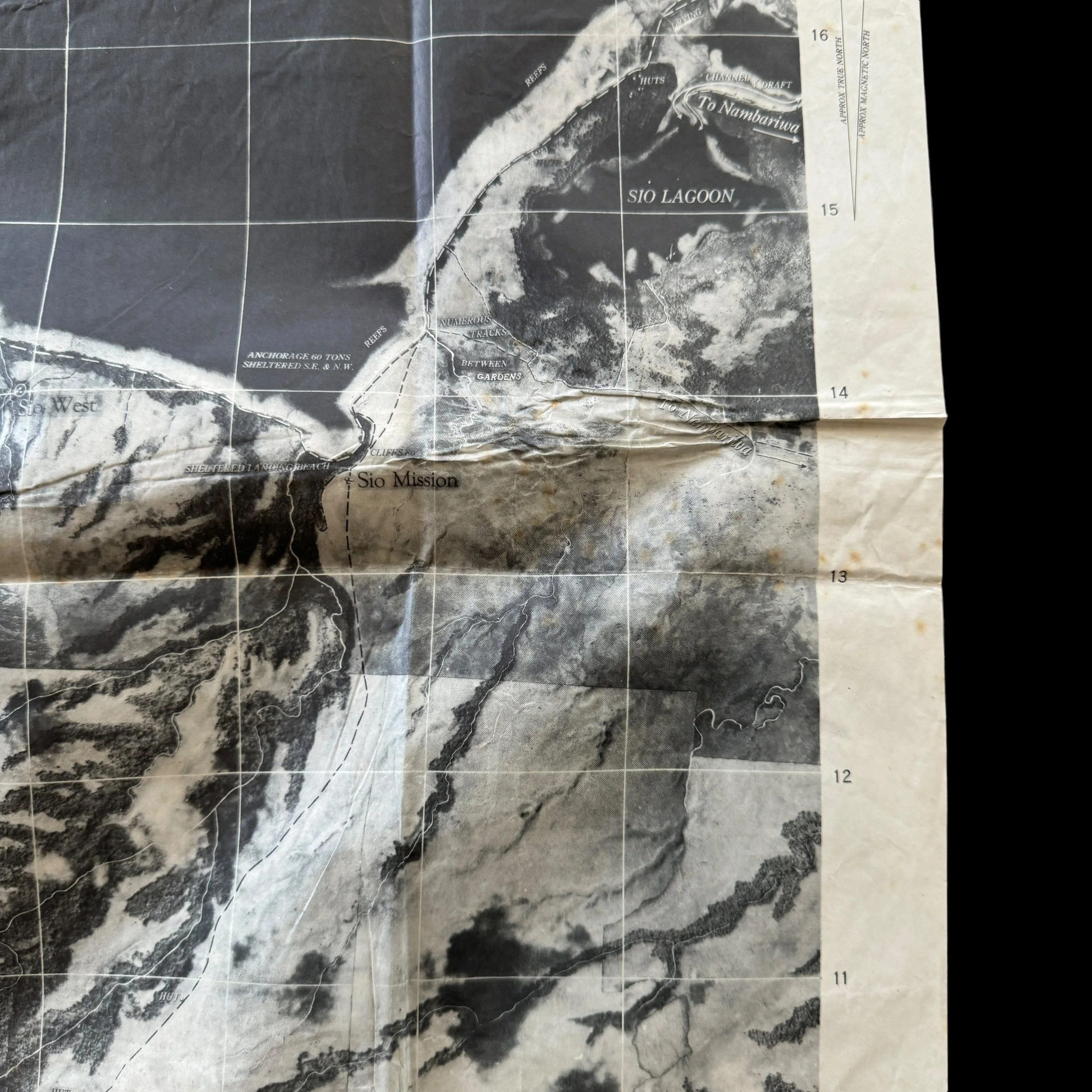

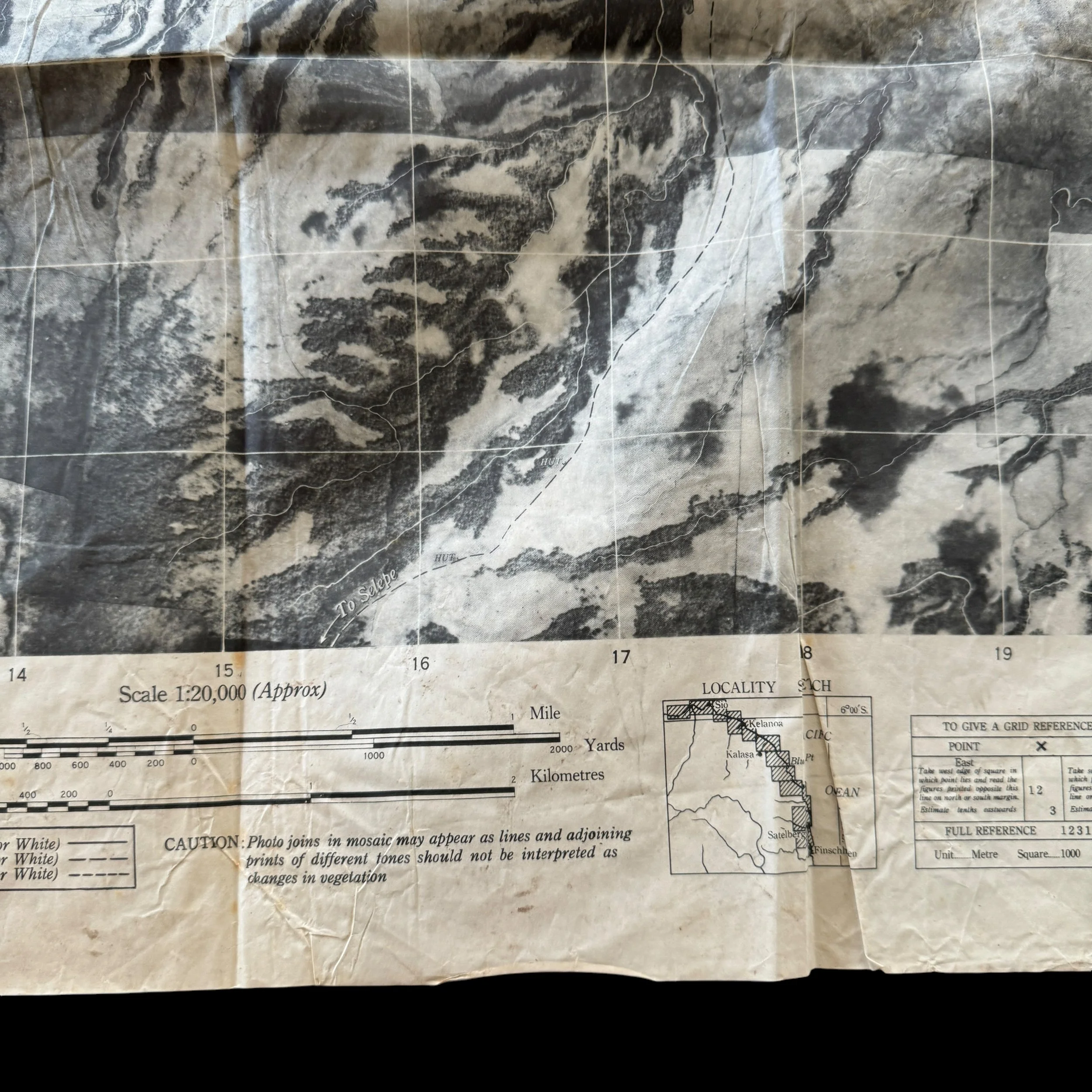
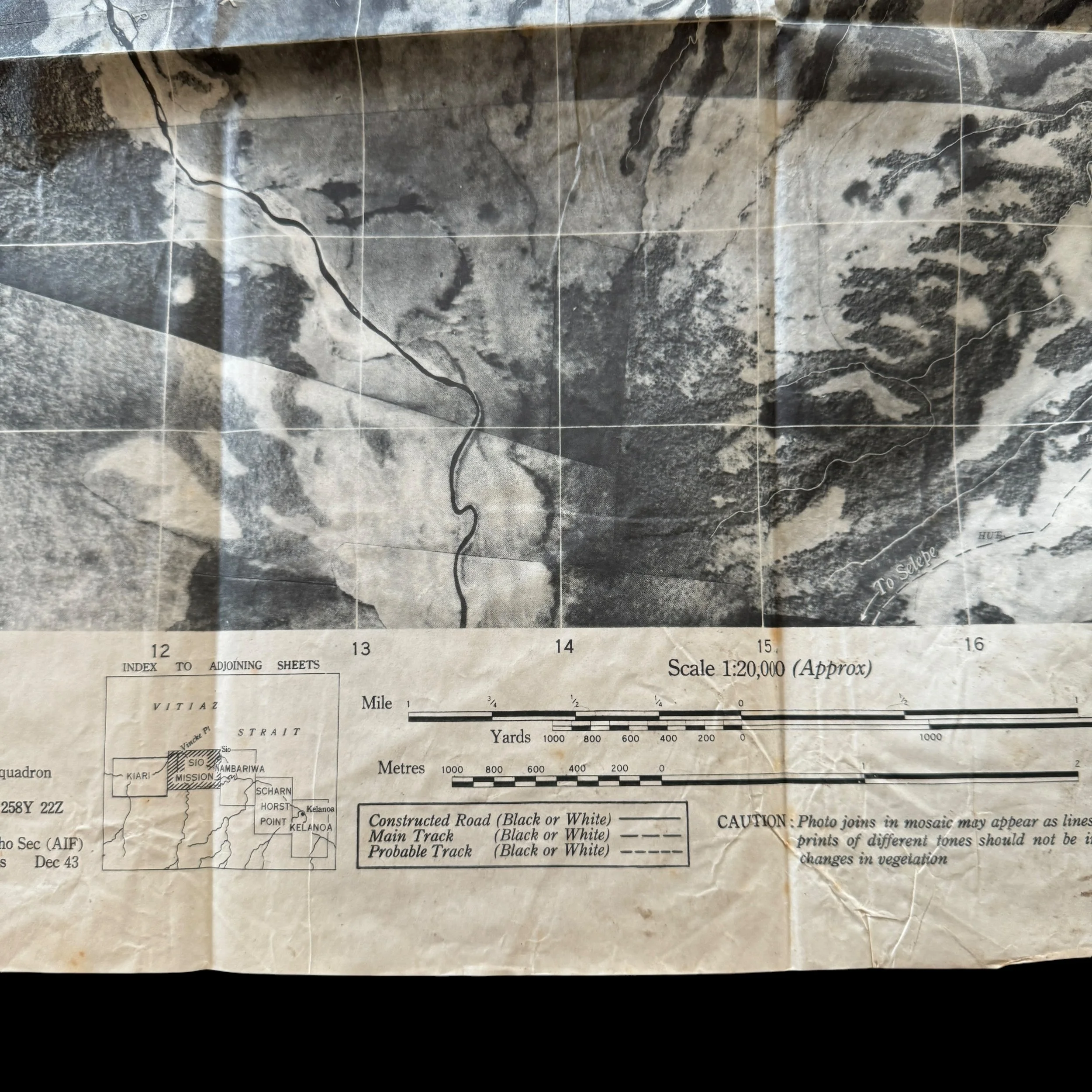
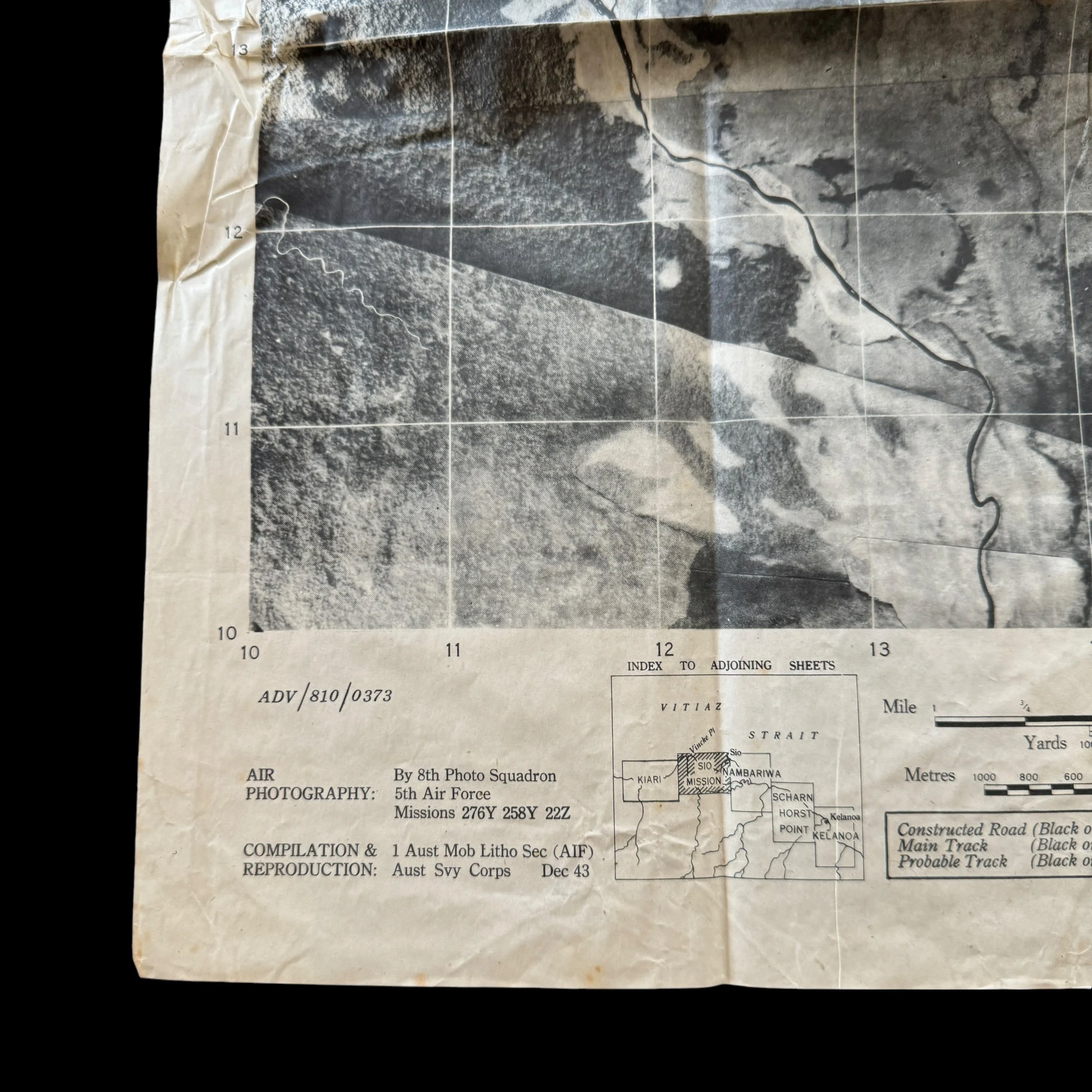
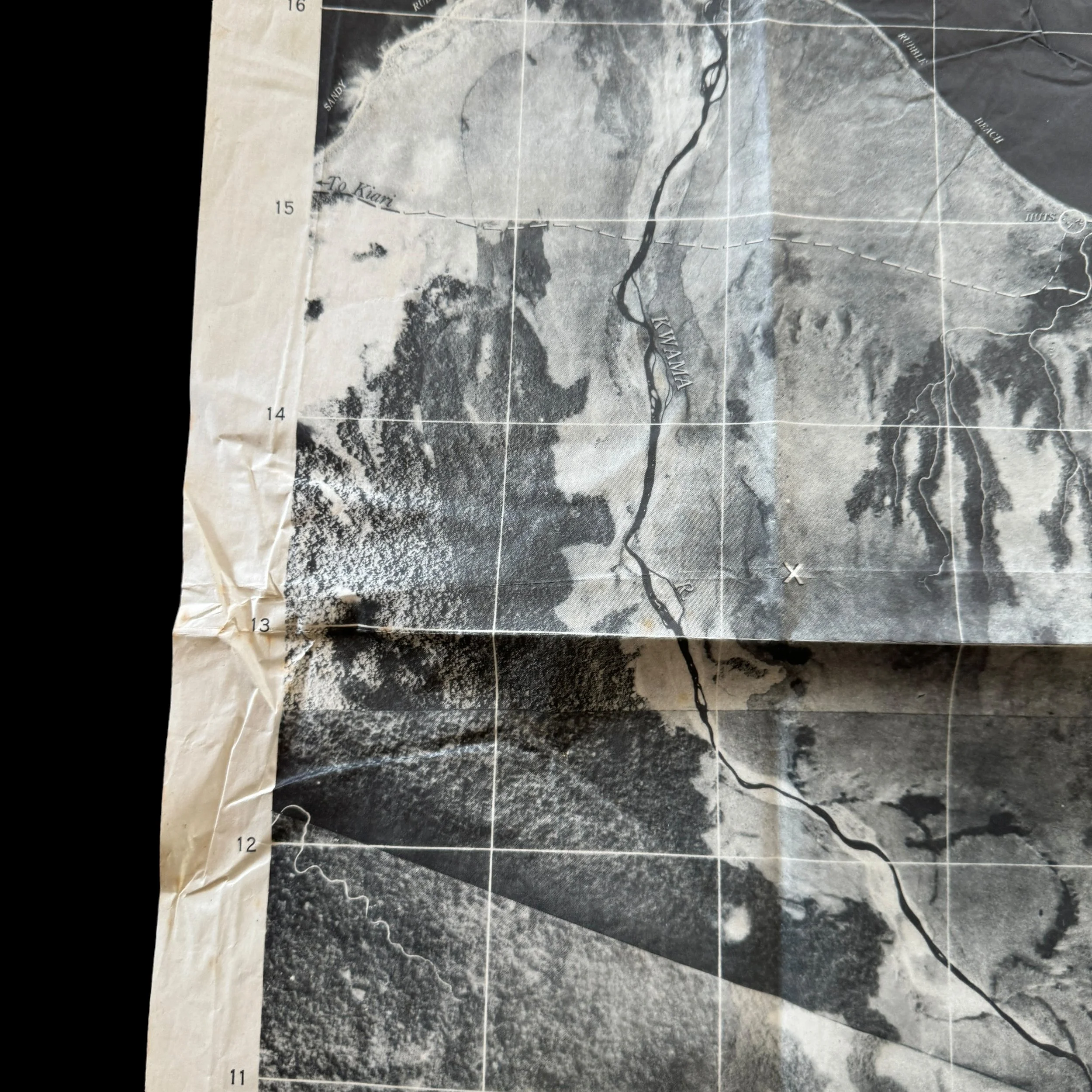
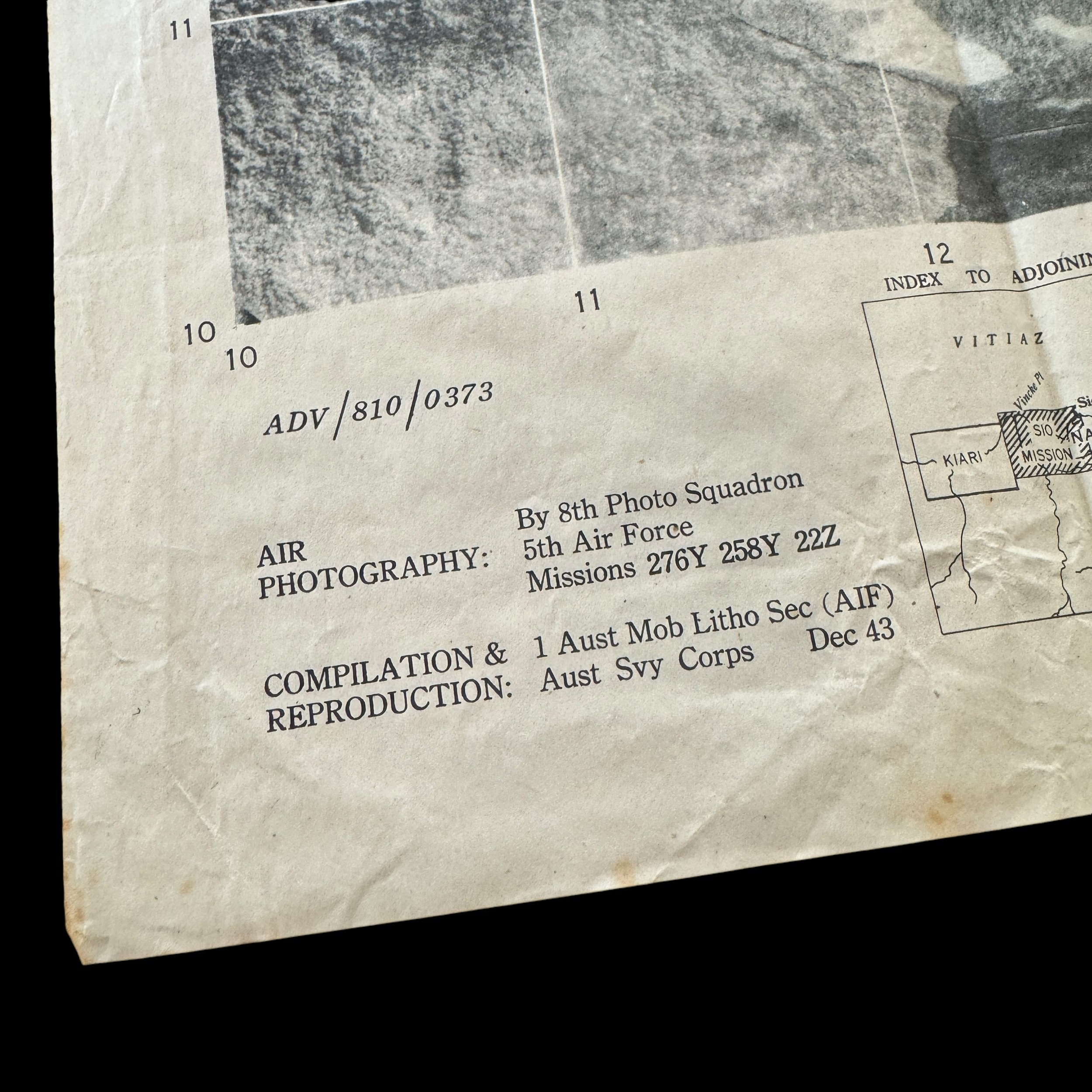
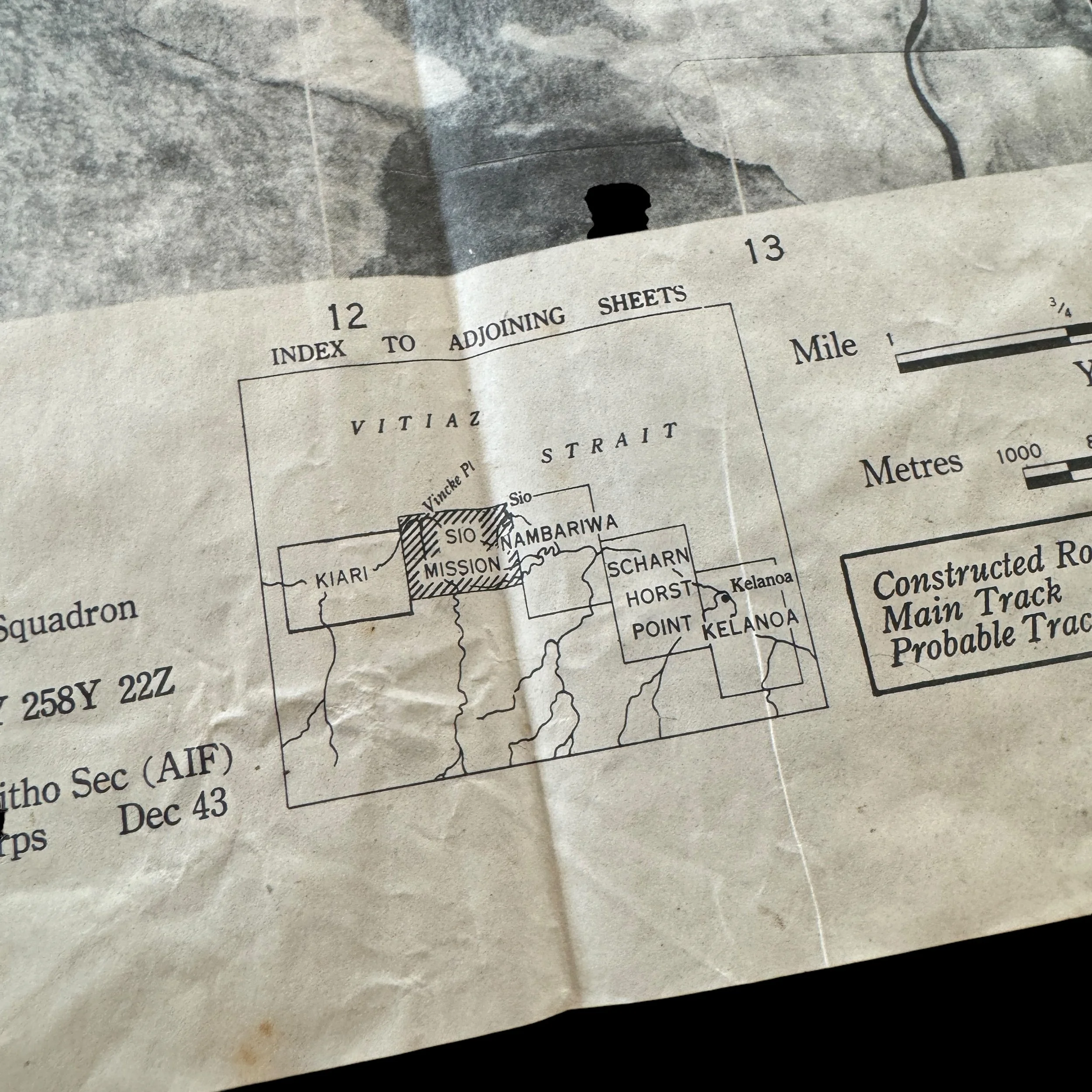
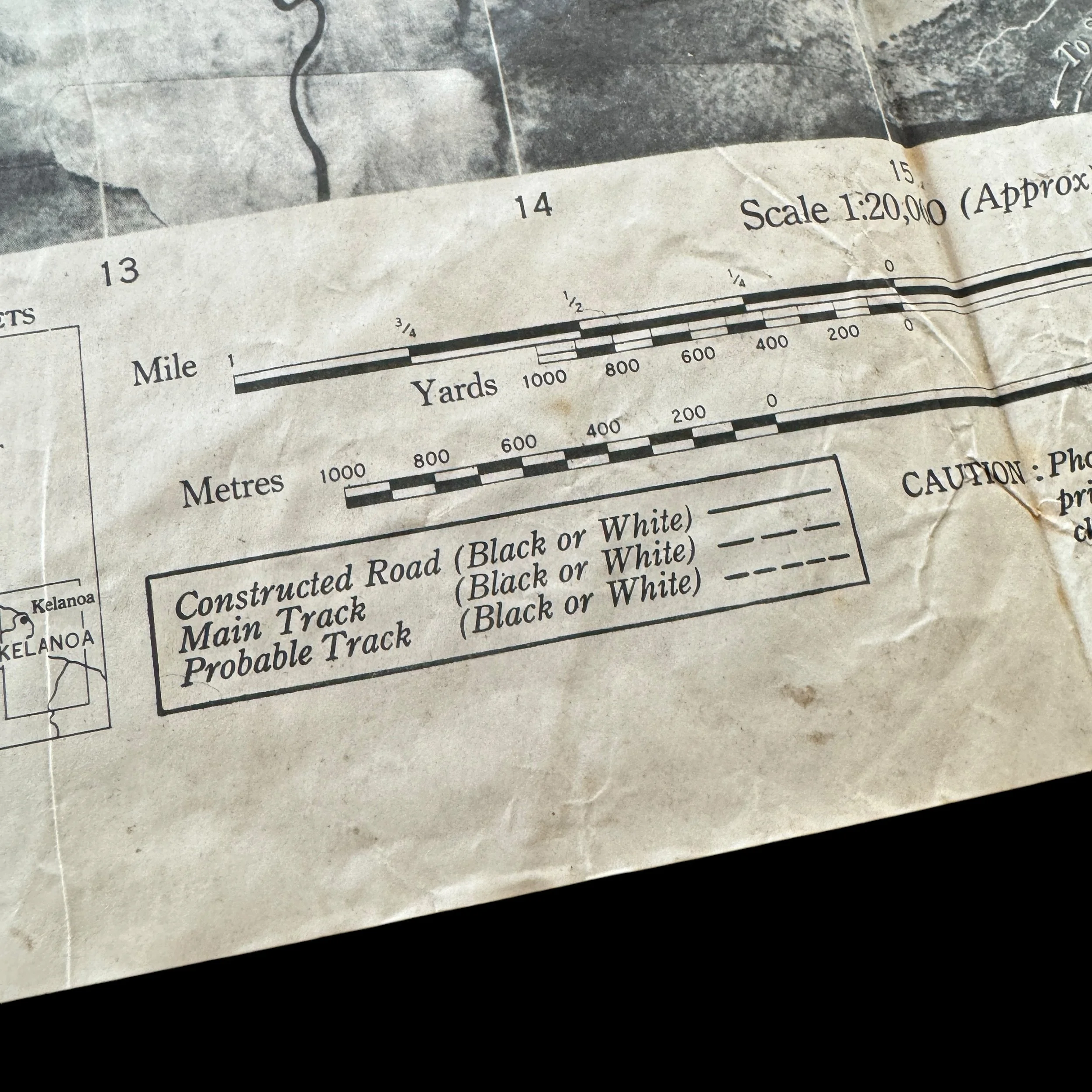



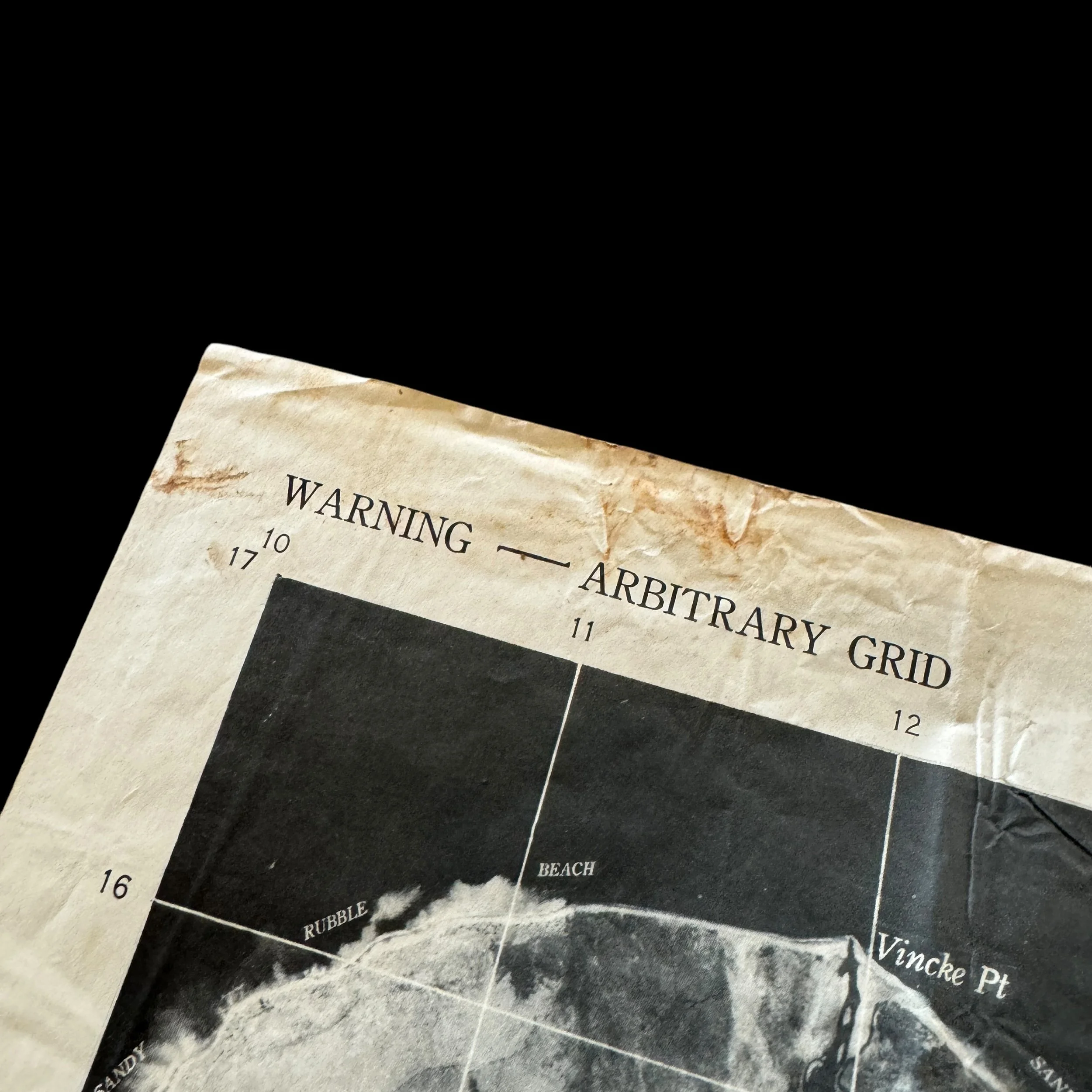



RARE! WWII 1943 Huon Peninsula New Guinea Campaign 8th Photo Reconnaissance Squadron (5th Air Force) Heavily Used Sio Mission Aerial Photo Map*
Comes with a hand-signed C.O.A.
*This New Guinea combat map is a part of a larger 8th Photo Recon Squadron bring-back collection of TYPE-ONE mission photographs (the same used to make these combat maps) as well as original Allied combat maps used during the New Guinea campaign.
Size: 18 × 23 inches
This extremely rare and museum-grade Pacific Theater WWII artifact is an original 1943 dated and heavily combat-used New Guinea photomap that was created using aerial photo reconnaissance mission photographs by the infamous 5th Air Force - 8th Photo Reconnaissance Squadron (Eight Ballers).
The 8th PRS, also known as the 8th Photo Reconnaissance Squadron, earned a renowned reputation for its exceptional service during campaigns across various regions including the East Indies, Japan, China, Papua, Guadalcanal, New Guinea, Northern Solomons, and Bismarck.
The 8th Photographic Reconnaissance Squadron (8th PRS) operated under the U.S. Army Air Force (USAAF), specifically part of the 5th Air Force and the 6th Photographic Reconnaissance Group (6th PRG). Referred to as the 8th Photographic Squadron, 8th Photo Recon Squadron, or 8th Photo Recon, the unit was initially outfitted with the F-4 Lightning, a specialized photographic reconnaissance variant of the P-38 Lightning. Camera equipment was installed in the nose section in lieu of traditional armaments. Conducting missions above Japanese-held territories and airfields, the squadron captured vital imagery utilized in the creation of aerial maps and target intelligence for subsequent combat operations. These reconnaissance flights were inherently perilous, with pilots often flying solitary missions through adverse weather conditions and challenging navigation circumstances. While over target areas, pilots maintained a steady flight path at lower altitudes to ensure high-quality photographic results, braving risks such as anti-aircraft artillery and potential interception by enemy planes. In later operations, F-4s received protective escort by armed P-38 Lightnings to enhance their defensive capabilities.
________________
One critical phase of this campaign was the Allied advance along New Guinea’s northern coast, culminating in the capture of Sio Mission in early 1944. Located on the Huon Peninsula, Sio was a small coastal village with a mission station that became a strategic objective during the Allied campaign. Sio was particularly significant because it marked the endpoint of the Allies' months-long advance across the peninsula, which began with the fierce fighting at Finschhafen in late 1943. The rugged terrain, dense jungle, and harsh weather conditions made the journey to Sio treacherous, yet the Allies understood that controlling this area was essential to driving the Japanese further north and securing the northern coast of New Guinea.
The advance to Sio was spearheaded by Australian troops, especially the 9th Division of the Australian Army, who faced stiff Japanese resistance along the way. After the decisive battles at Finschhafen and Sattelberg, Australian forces pursued the retreating Japanese through rugged, jungle-covered mountains. The Australian strategy aimed to maintain pressure on the Japanese while securing villages and supply points along the coastline, isolating and cutting off Japanese forces from their supply lines and reinforcements. The movement toward Sio reflected a strategic shift, focusing on weakening the Japanese by denying them resources and key positions instead of engaging in costly, large-scale battles.
As the Australian troops approached Sio, the Japanese forces, weakened by continuous retreat, dwindling supplies, and tropical diseases, were unable to mount significant defenses. The Allies reached Sio on January 15, 1944, and found it largely abandoned, as Japanese forces had been forced to retreat further westward. This relatively easy capture did not come without its challenges, however; Allied forces struggled against not just the enemy but the jungle itself. The combination of dense foliage, difficult terrain, and persistent rain turned every step into a grueling test of endurance. Despite the lack of Japanese defenses at Sio, the capture of the village marked a psychological victory, symbolizing the end of the Allies' successful drive across the Huon Peninsula.
Sio Mission’s capture held tactical and logistical significance as well. With Sio under Allied control, the Australians were able to use the area as a forward base, establishing supply lines, communication stations, and medical facilities. This capture effectively cut off the Japanese forces’ access to the northern coast, leaving them isolated in remote, rugged areas with little hope of reinforcement or resupply. This isolation led to a prolonged campaign of attrition, as the Japanese faced the harsh realities of starvation and disease, further weakening their operational capacity.
The New Guinea Campaign, and the capture of Sio in particular, exemplify the grueling nature of the Pacific War. The campaign showcased the Allies’ resolve and adaptability, their ability to execute complex logistical operations in remote locations, and their willingness to engage in prolonged warfare to push the Japanese out of strategic positions. The victory at Sio paved the way for further Allied advances along the coast and facilitated the eventual liberation of the Philippines.
________________
During World War II, combat photomaps were a vital tool for planning and executing military operations, particularly in challenging terrains like those found in the South Pacific, including New Guinea. Photomaps were created using aerial reconnaissance photographs combined with traditional cartographic techniques, providing highly accurate and detailed visual maps of terrain, structures, vegetation, and potential enemy positions. These maps were especially important in areas like New Guinea, where dense jungles, rugged mountains, and poorly charted territories made traditional navigation and planning extremely difficult.
The Strategic Importance of Photomaps in New Guinea
New Guinea was a key battleground in the Pacific Theater, as both Allied and Japanese forces sought control over the region due to its strategic proximity to Australia and critical supply routes. The dense jungle terrain and steep mountains made conventional maps inadequate, so photomaps became indispensable. These maps gave Allied forces a strategic advantage, as they could accurately pinpoint natural obstacles, river crossings, potential landing zones, and enemy fortifications—information that was crucial for planning ambushes, supply drops, and coordinated assaults.
In New Guinea, Allied forces needed to identify and navigate through uncharted jungle terrain, plan airstrikes, and locate Japanese supply lines and bases hidden in natural cover. Photomaps allowed military leaders to accurately identify these critical areas, providing vital intelligence for tactical planning. Allied forces used photomaps extensively in key operations, such as the capture of the Kokoda Track, the Buna-Gona campaign, and the Battle of Wau, where knowledge of terrain often determined the outcome of engagements.
The Creation and Use of Photomaps
Photomaps were produced by taking multiple high-resolution aerial photographs, often from reconnaissance planes flying at high altitudes. These photographs would then be stitched together to create a detailed composite of the area. The accuracy of photomaps depended heavily on the quality of the photographs and the skill of the cartographers who aligned them. In New Guinea, challenging weather conditions, such as tropical storms, heavy cloud cover, and mountainous terrain, complicated aerial photography, making photomap creation a demanding task that required patience and precision.
Once photomaps were created, they were distributed to field commanders, pilots, and ground troops. These maps allowed soldiers to plan their approach routes, identify enemy defenses, and navigate difficult terrain without the need for detailed topographic maps, which often weren’t available or were outdated. For example, in the Battle of Buna-Gona, photomaps enabled Allied forces to pinpoint Japanese bunkers, hidden artillery positions, and supply trails that would have been invisible in standard maps or field reports. This level of detail was critical in planning precise airstrikes and ground movements, which were essential in securing victory in such a complex environment.
Impact on Air and Ground Operations
Photomaps were especially useful in coordinating air and ground operations. The Royal Australian Air Force (RAAF) and the United States Army Air Forces (USAAF) used photomaps to identify bombing targets, enemy fortifications, and supply depots. Bombers could plan their approach routes and targeting patterns based on detailed topography provided by photomaps, reducing the risk of collateral damage and improving the success rate of airstrikes. During the Battle of Wau, for instance, photomaps allowed Allied pilots to navigate through dense cloud cover and steep mountain ranges to deliver much-needed supplies and reinforcements to Allied forces engaged in battle.
For ground forces, photomaps were invaluable in planning amphibious landings and troop movements across challenging terrain. Troops could avoid natural barriers such as swamps, cliffs, and rivers, and identify more accessible routes through dense jungle areas. This knowledge allowed for more efficient movement and positioning of forces, helping troops to maintain the element of surprise in their engagements with Japanese forces.
In amphibious operations, such as those around Lae and Salamaua, photomaps helped commanders choose landing sites that offered cover and proximity to key objectives. The maps provided enough detail to allow for effective coordination between infantry, artillery, and air support units, maximizing the efficiency of Allied assaults on Japanese-held positions.
Legacy and Influence
The use of photomaps in New Guinea marked a turning point in military cartography, establishing photoreconnaissance as a critical component of modern warfare. These maps set a new standard for military intelligence and planning, showcasing the potential of aerial reconnaissance to provide real-time data and highly accurate visual information. The success of photomap-based operations in New Guinea helped influence the development of satellite imagery and geospatial intelligence systems used in modern military and civilian applications.